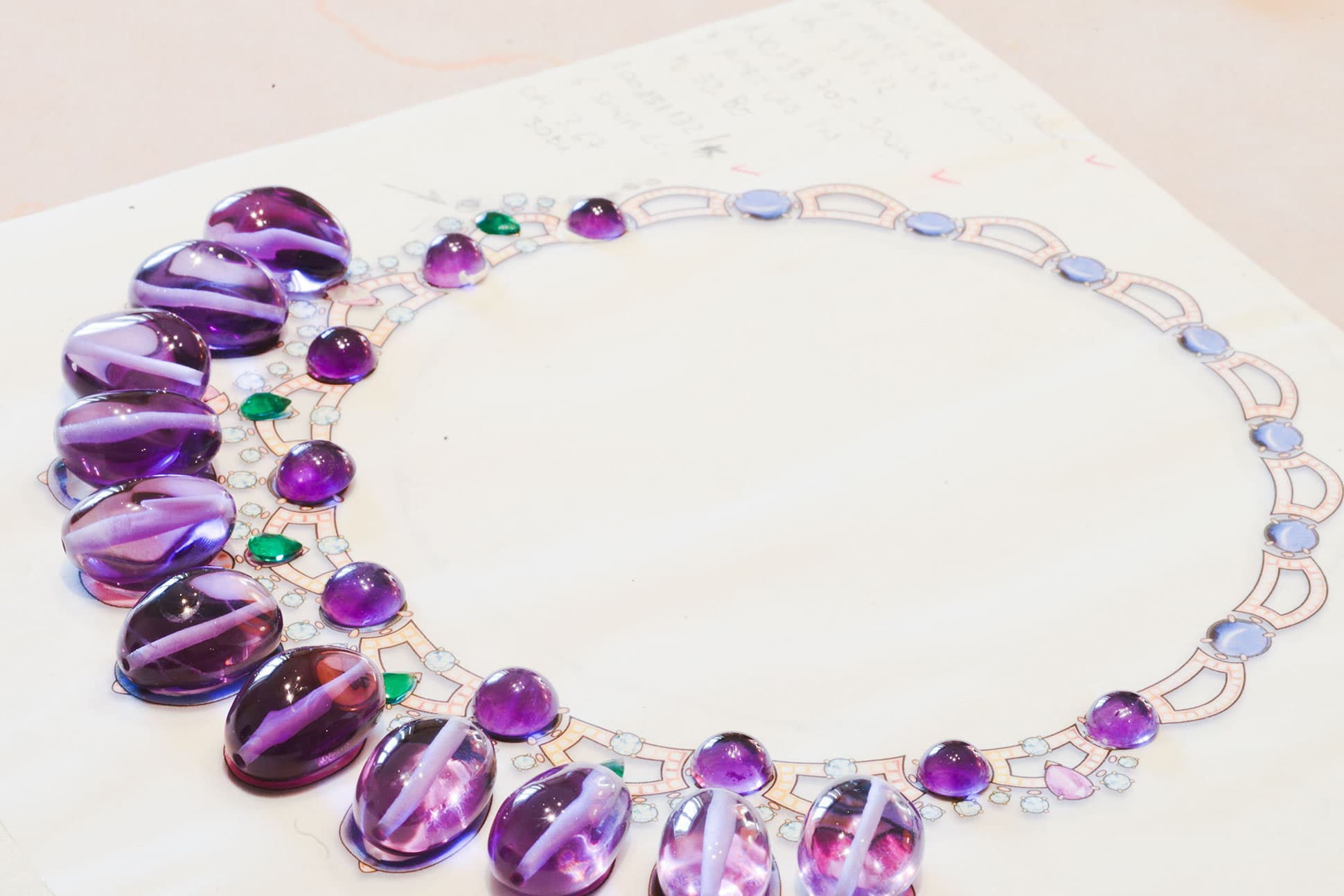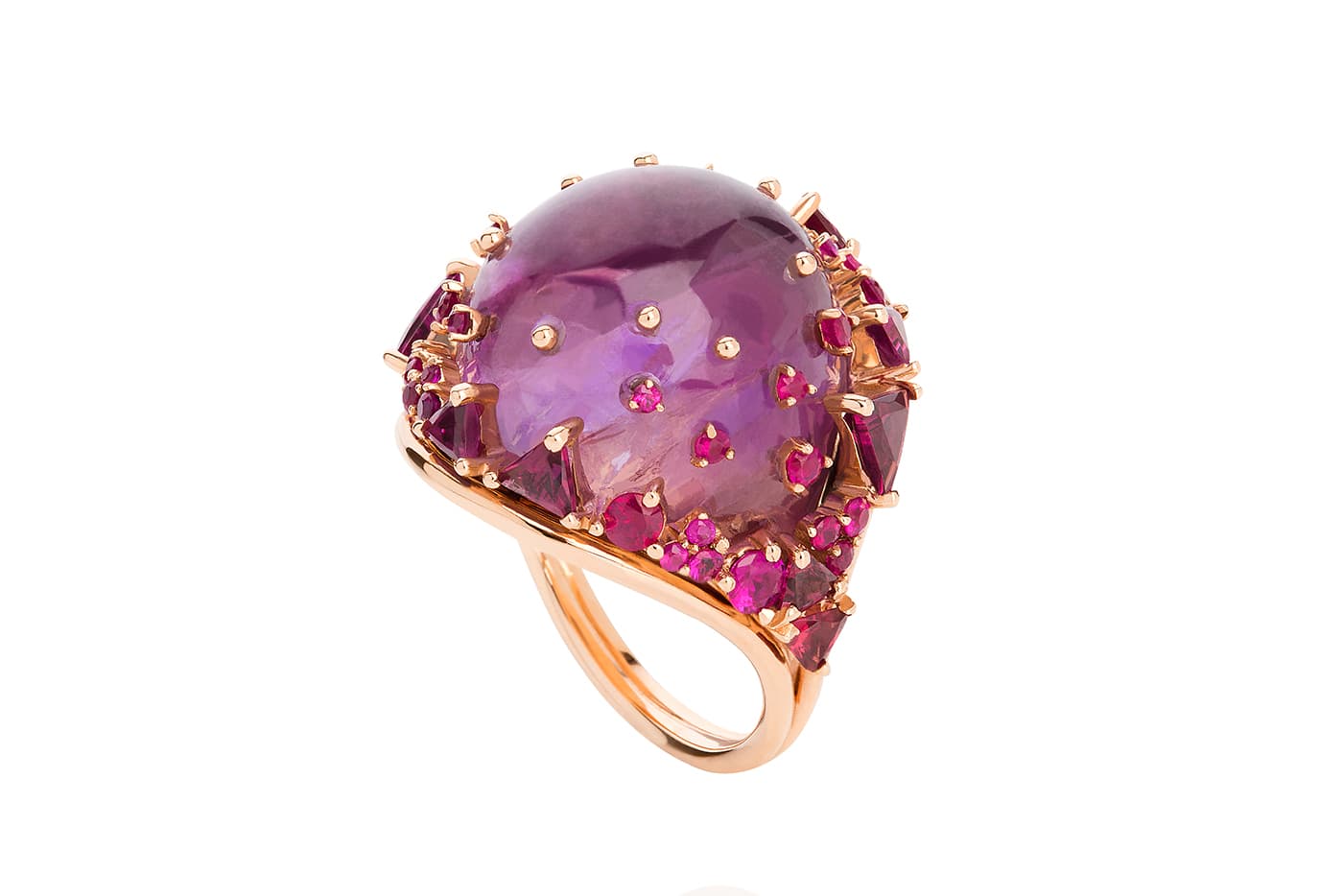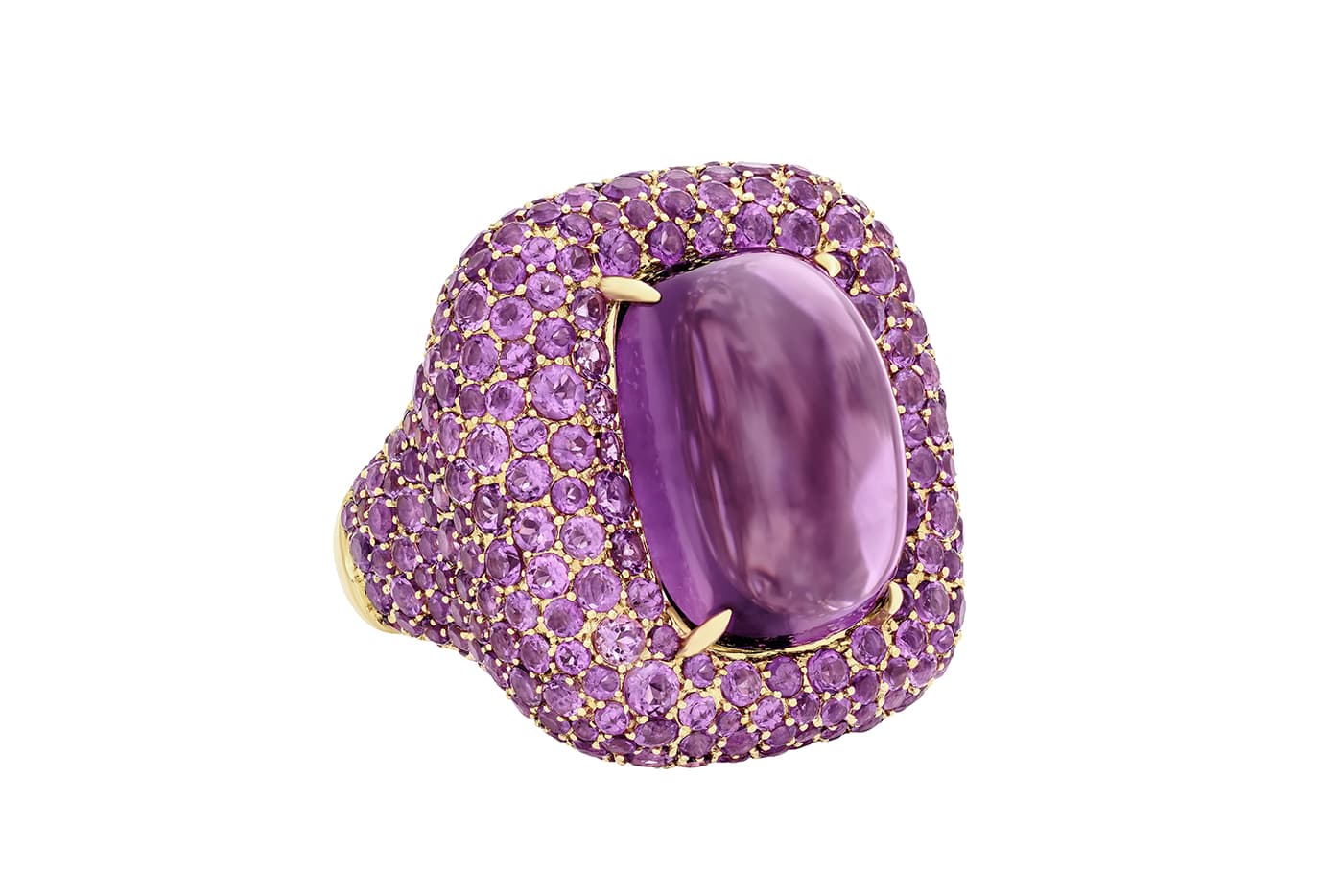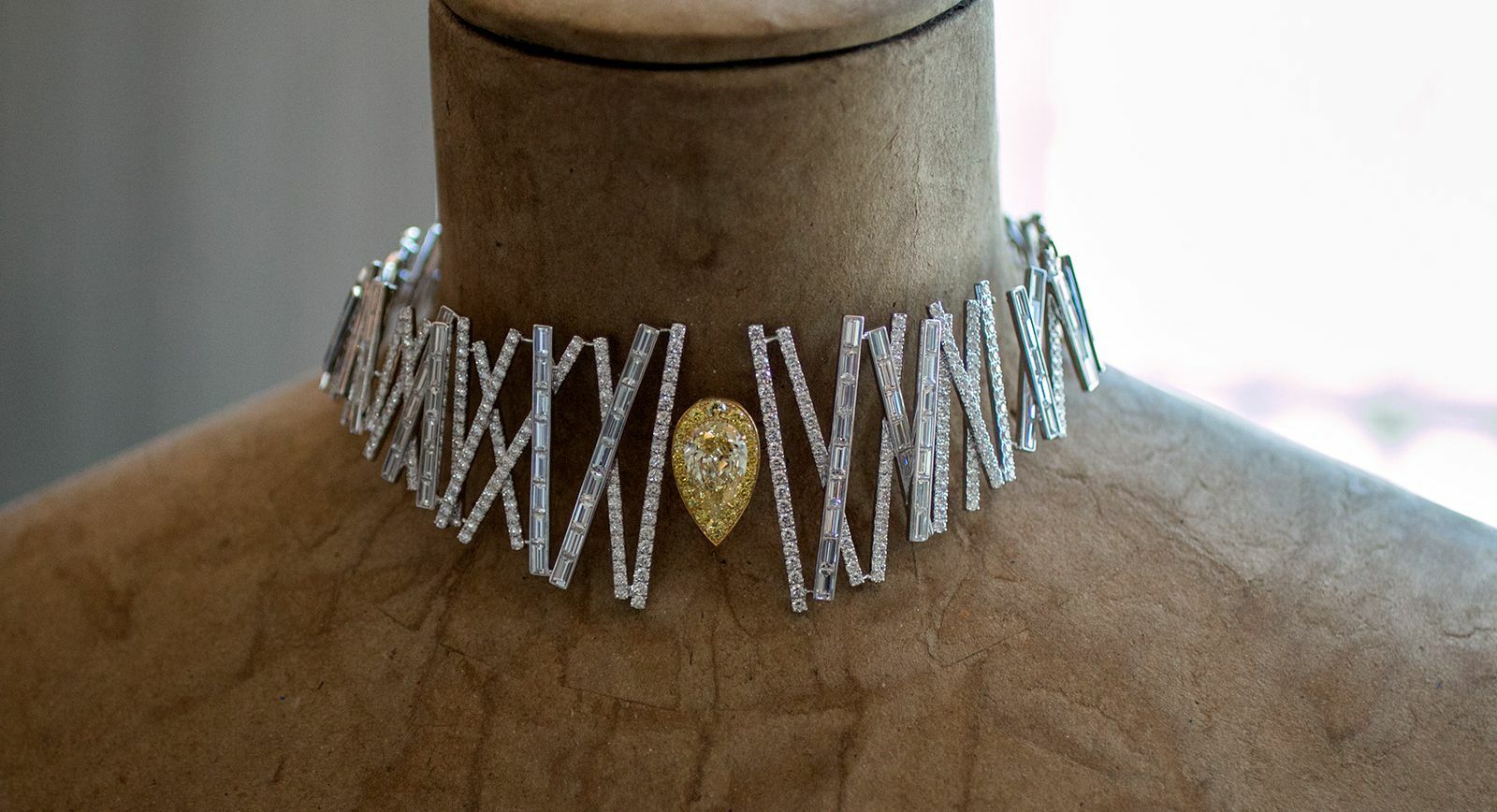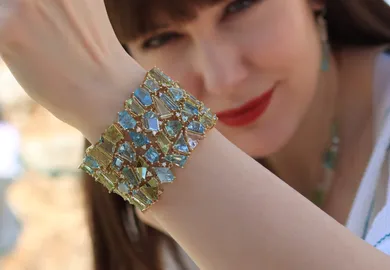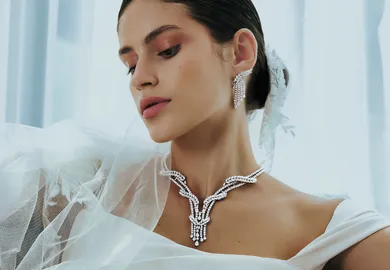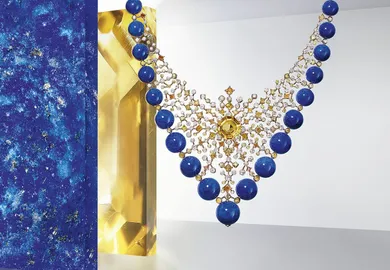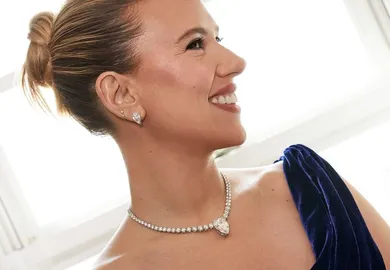
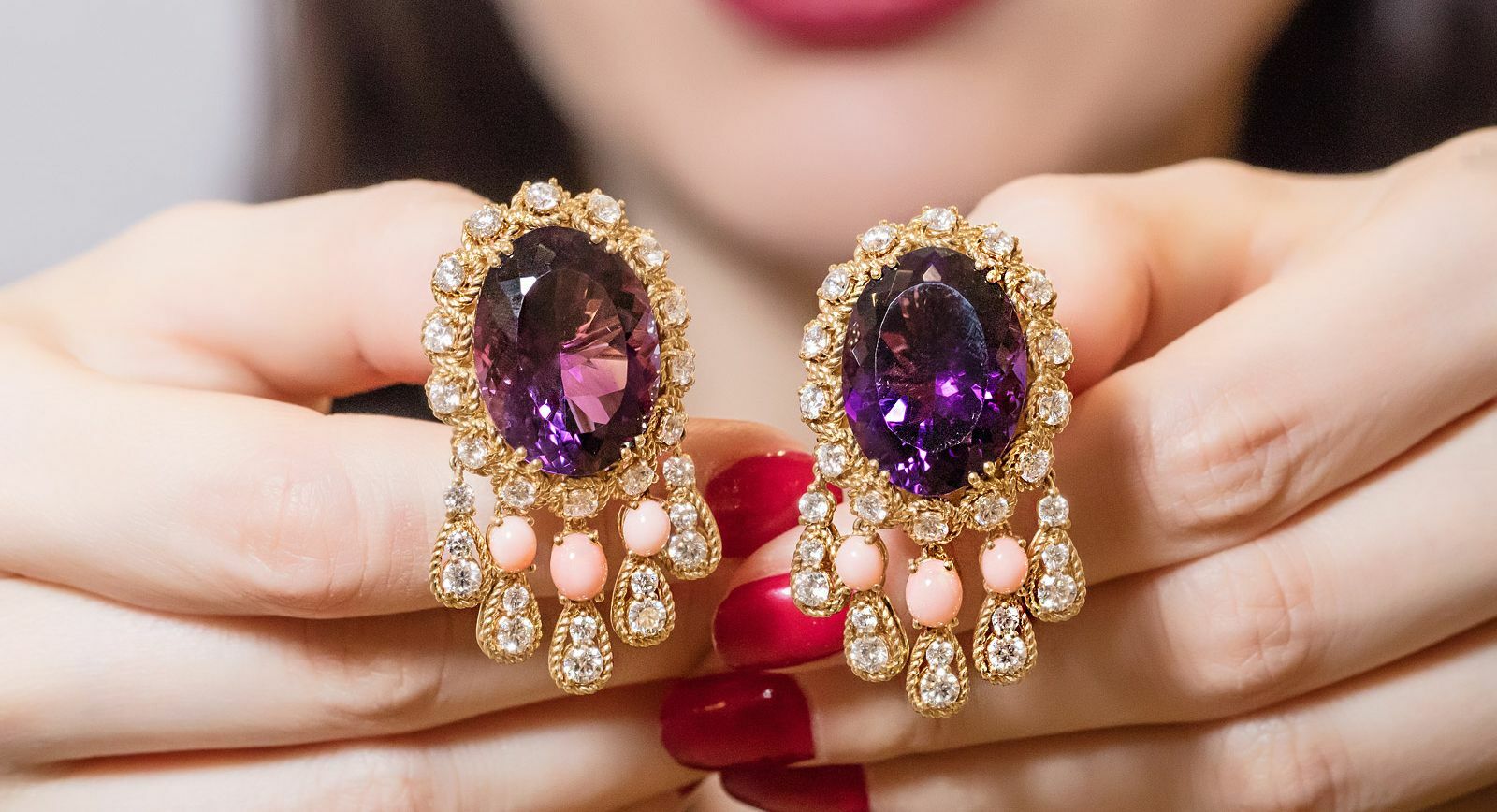
Amethysts: The Rise and Fall, and Rise Again, of This Regal Purple Gem
Amethysts today are classified as semi-precious stones – beautiful to look at yet plentiful and fairly affordable. But that has not always been the case. Before large deposits were discovered in South America in the 19th century, they were regarded as a cardinal gem, treasured as highly as diamonds and more valuable than emeralds, rubies and sapphires.
Signifiers of great wealth and status, for centuries these precious purple stones were worn exclusively by royalty and the most privileged in society. Mined in the Ural Mountains of Siberia, fine amethysts were a favourite of Queen Catherine the Great of Russia and Cleopatra, the last ruler of Ancient Egypt, who wore an amethyst ring throughout her relationships with Julius Caesar and Mark Antony, sparking a love for this richly hued gem among the noblewomen of Rome.
When huge quantities of South American amethysts began to flood the market, amethysts were forced to relinquish their precious status, which coincided with Queen Victoria’s ascension to the throne in England. A great lover of jewellery, it quickly became the fashion to wear extravagant suites set with big, colourful gems, fuelling the popularity of semi-precious stones, and richly hued amethysts in particular.

A Roman amethyst ring with a portrait of Dioskourdies, circa late 1st century BC, sold in 2019 by Christies's New York for $1.6 million
Studying photographs from this era, it is impossible to appreciate quite how vibrant was this period in history. What we see in the images that have endured are many shades of grey, when in fact the Victorian age saw an explosion of colour in all aspects of life, with rapid industrialisation enabling fabrics to be dyed every shade imaginable. This was lavishly mirrored in the jewels of the time, which complemented the opulent silk and satin evening gowns that were the height of fashion.
Peter Schaffer, director of A La Vieille Russie, the New York-based antique store, believes that the rise in popularity of large, impressive jewellery sets explains the exuberant use amethysts in Victorian jewellery, which were abundantly available and relatively affordable, even in larger sizes. “It made the jewels more desirable and accessible,” he says, pointing out that it would have been nearly impossible to create large suites of jewels set with more precious stones, such as rubies and emeralds, because the amount of stones required would have made them extremely cost prohibitive.

WITR Jewellery amethyst ring, and amethyst and topaz necklace and bracelet, in yellow gold
Amethysts were the perfect semi-precious gem for flaunting one’s wealth and brought a real sense of grandeur and majesty to jewels. However, the fortunes of this beloved purple stone were to change as the Edwardian era drew to a close in the early 20th century. What was the reason for the amethyst’s swift fall from grace? Emily Barber, Director of Jewellery at auction house Bonhams, points to the discovery of the South Africa diamond mines in 1867 as one explanation for the rapid decline in their popularity, and coloured stones in general. “Previously, diamonds came from Brazil and India and only the very wealthiest could afford them,” she says. “After the discovery in South Africa, they were easier and cheaper to obtain.” The advent of electric lighting was also a contributing factor, she believes: “It made colourful jewels look gaudy, adding to the fashion for ‘white’ jewels. The 20th century saw the diamond take centre stage and De Beers’ famous slogan, ‘a diamond is forever’, literally forever changed public perception. A diamond became the universal symbol of love and marriage.”

René Boivin 1950s cabochon and carved amethyst necklace and bracelet, interspersed with chrysoprase beads, in 18 carat gold. Sold by A La Vieille Russie
Guy Burton, Director of Hancocks London, believes social history played one of the biggest roles in peoples’ changing attitude towards amethysts. “War had a huge impact on the early part of the 20th century,” he explains. “Brightly coloured jewels didn’t reflect the mood of society, which continued into the post-war years. The Art Deco era brought back some of the colour, however there was an almost deliberate movement away from styles, techniques and gems of the ‘stifling’ Victorian and Edwardian eras.”
Amethysts enjoyed a retro revival in the middle of the 20th century, but while their fortunes have changed with the passing of time, Peter Schaffer is keen to point out that there has always been, and continues to be, a strong following and interest in old mine amethysts. “The main attraction is the colour,” he says. “Today, a great Siberian amethyst is at the top of the heap.” Emily Barber agrees. “Fine quality Russian amethysts were worked into the parures and tiaras of the nobility and the aristocracy throughout the 19th century, and large-size Russian amethysts of the deepest, most luxurious purple remain the most valuable.”

Marjorie Merriweather Post's Cartier amethyst and turquoise necklace, circa 1950-1951
There will always be a niche for the finest examples of any gem, but there is also a growing appreciation of colour in jewellery that is fuelling a resurgence in popularity of the amethyst among younger generations. Creating high jewellery with semi-precious gems offers buyers a more affordable entry point into this rarefied world while at the same time giving jewellery houses the freedom to experiment with larger, more dramatic stones. Revered by collectors and enthusiasts who are drawn to the great old mine amethysts, it is wonderful to see a younger generation of jewellery lovers wake up to the unique beauty of this most regal of gems.
Amethyst may have gone in and out of fashion through the centuries, but right now, this magnificent purple gem couldn’t be more desirable.

WORDS
Claire Roberts has been writing about jewellery and watches for more than 20 years. She is a seasoned journalist who joined the team 5 years ago as a contributing writer and a newsletter editor.
Related Articles
Latest Stories
Add articles and images to your favourites. Just

Reinventing Royalty:The European-Inspired Luxury Behind Isabel Gemology
I started 2025 with a series of articles titled ‘Jeweller of the Month’ to highlight the true talent among niche designers in the jewellery industry. For May, it is Isabel Delgado, the founder of Isabel Gemology, who I would like to shine the spotlight on.
Jewels Katerina Perez Loves
Continue Reading

Writing Adventures:Co-Authoring the Book
Paraiba: The Legacy of a Color
Brand Focus: Cartier
Jewellery Insights straight to your inbox









